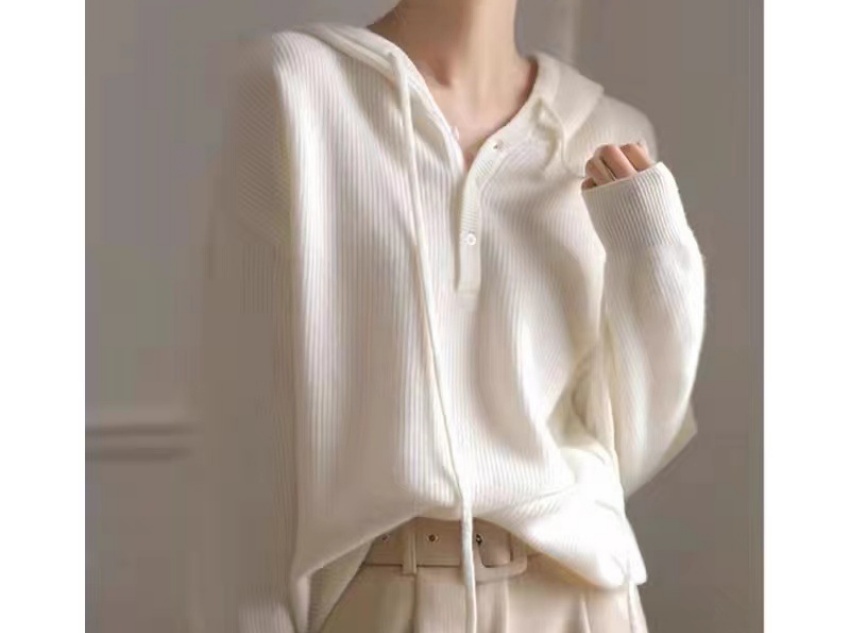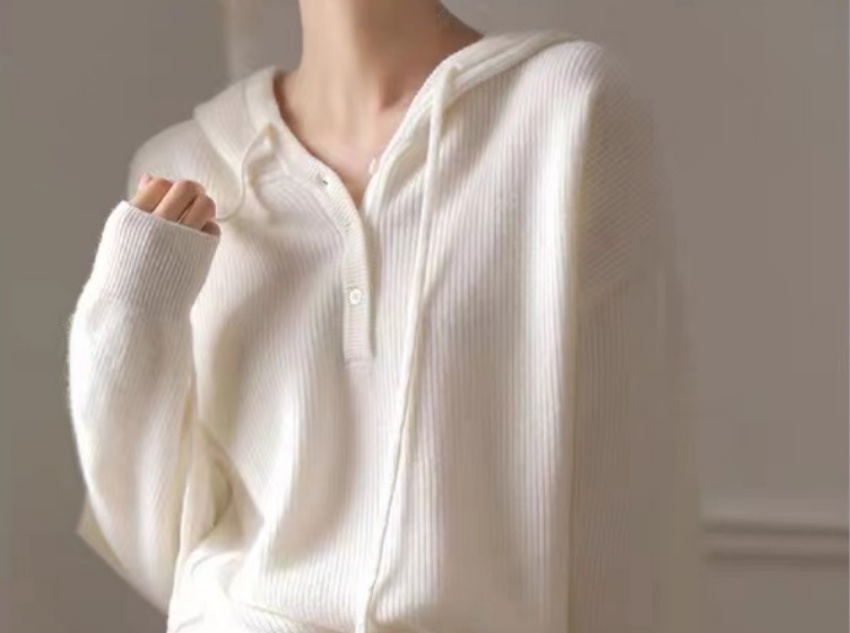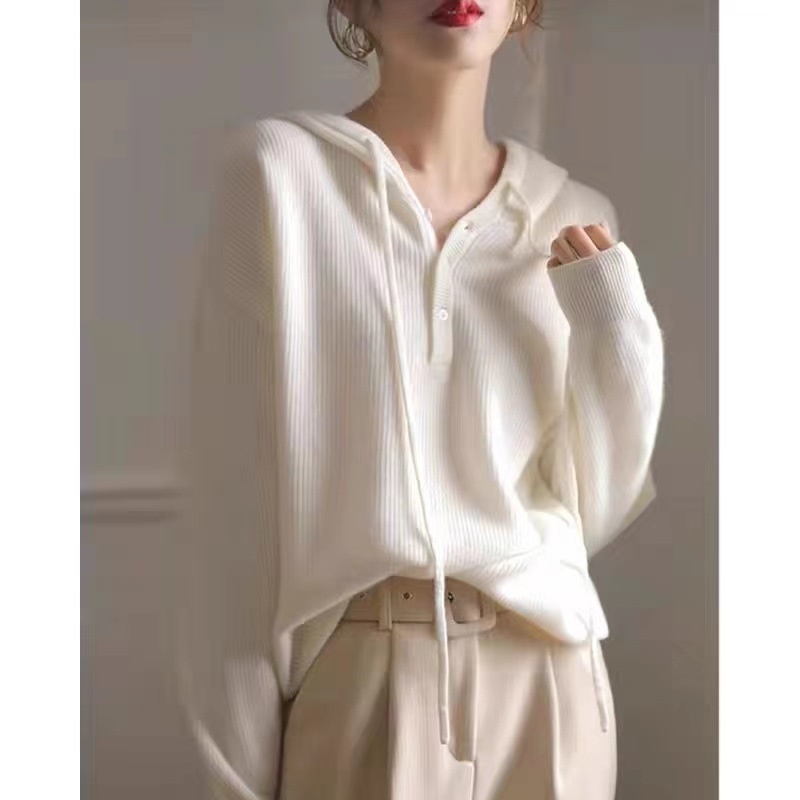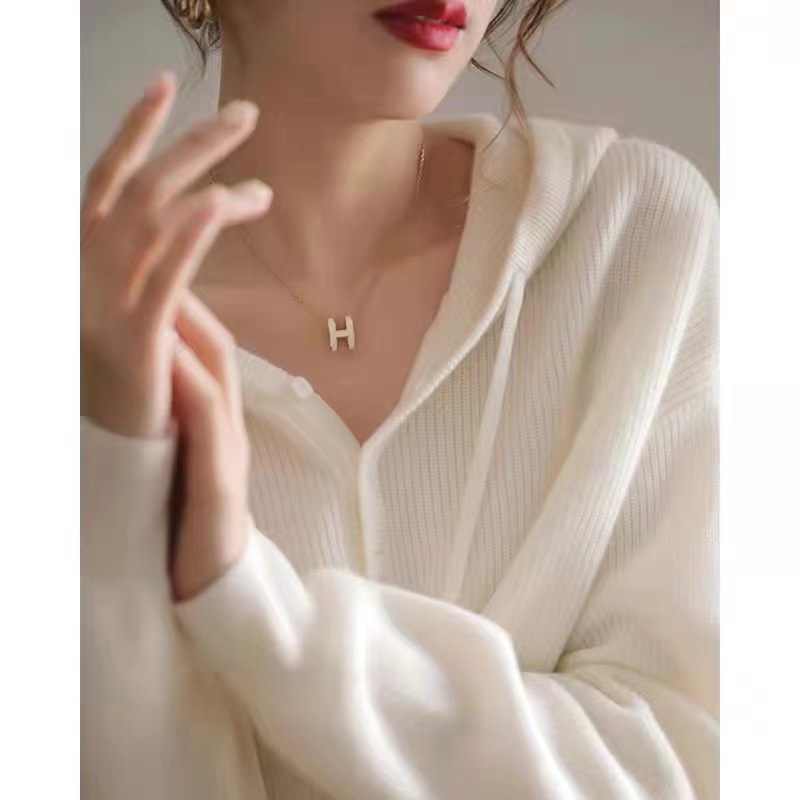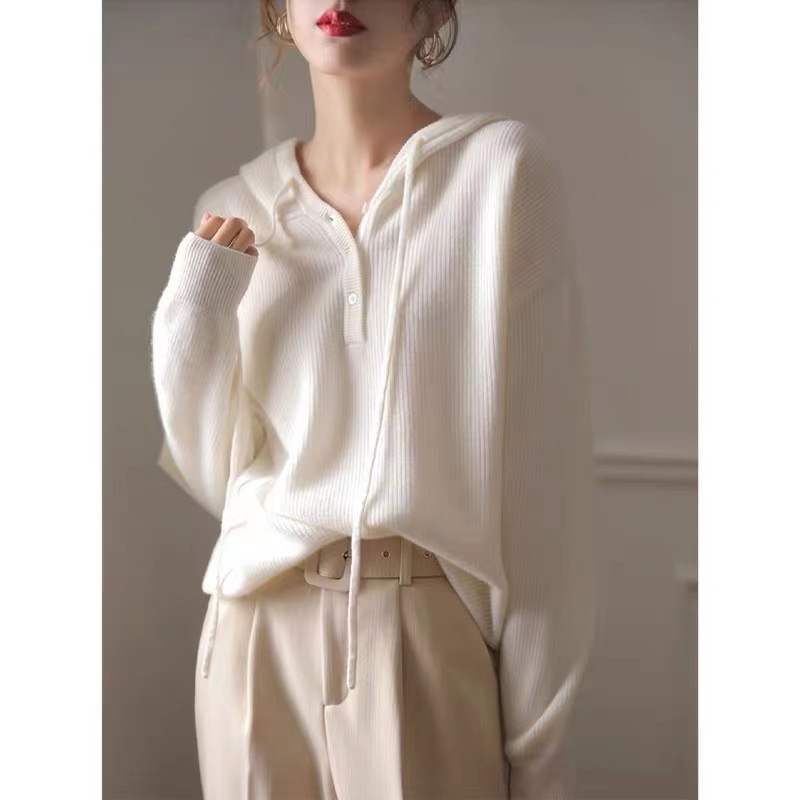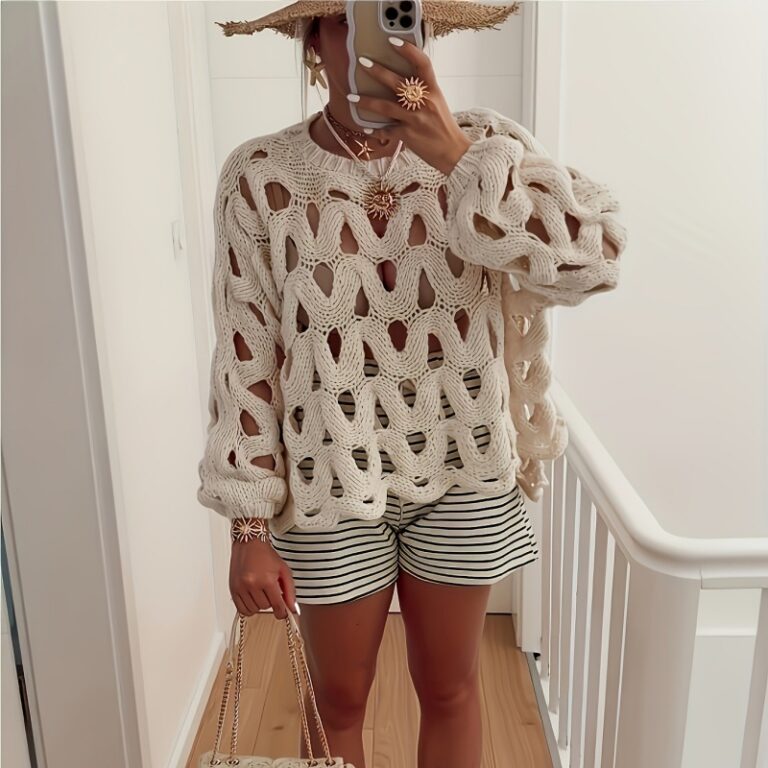The women’s hooded sweater in the picture, beneath its simple appearance, embodies numerous exquisite craftsmanship.
Judging from the appearance and texture, this sweater can be made of high-quality wool or wool blend fabric. Wool has good heat retention and can bring warmth to the wearer in slightly cool weather. Blended fabrics may contain an appropriate amount of nylon or spandex. Nylon can enhance the wear resistance of the fabric and extend the service life of the sweater. Spandex endows the fabric with elasticity, making the sweater more in line with the body’s curves when worn, comfortable and free to move around, and less likely to deform.
The surface of the sweater presents regular vertical stripe textures, which is achieved through a specific weaving technique. Vertical stripe weaving not only has a slimming effect visually, but also adds a sense of three-dimensionality and layering to the clothing. During the knitting process, the double rib knitting technique might have been adopted. The fabric woven with this technique has a tight structure, clear patterns, and a certain degree of elasticity, which makes the sweater more comfortable to wear while maintaining its cut.
The craftsmanship of the hooded part is rather meticulous. The cutting of the hat shape needs to be precise. It should not only ensure that the head can move freely when worn, but also present natural and smooth lines in appearance. The brim of the hat has undergone special treatment, such as locking or ribbed finishing, to prevent the edge from loosening and increase durability. The part connecting the hat body and the garment body adopts a reinforced sewing process to ensure that the connection will not crack after frequent wearing and washing.
The drawstring is connected to the body of the garment. The material matches the fabric of the sweater and the touch is soft. The two ends of the drawstring have undergone edge burning treatment to prevent the drawstring ends from loosening. The holes for threading the drawstring are made with edge wrapping or ring wrapping techniques to prevent the holes from expanding or the fabric from wearing out during frequent drawstrings.
The buttons on the front of the garment adopt a style that is in harmony with the overall style. The matching of buttons and buttonholes is precise, and the hemming process of the buttonholes is fine, ensuring that the buttons can be firmly fastened and unfastened, while maintaining the flatness of the fabric around the buttonholes, preventing deformation or tearing due to frequent opening and closing.
The cuffs and hems adopt a ribbed closure design. The weaving density of the ribbed part is different from that of the main body of the garment. Through different stitching techniques and yarn tension, the ribbed has better elasticity and resilience. This design can not only effectively prevent cold wind from entering, but also create a visual contrast and enrich the overall shape.
The sweater presents a uniform and soft white color, indicating that our dyeing technique is relatively mature. During the dyeing process, environmentally friendly dyes were used to ensure that the clothes do not irritate the skin and have high color fastness. Through multiple dyeing and fixation treatments, the color is evenly attached to the fibers, avoiding color differences or color fading. This ensures that the sweater can maintain its bright color even after long-term wearing and washing.
This women’s hooded sweater, with meticulous control over fabric, weaving, details and dyeing, has become a fashionable item that is simple yet of high quality.

